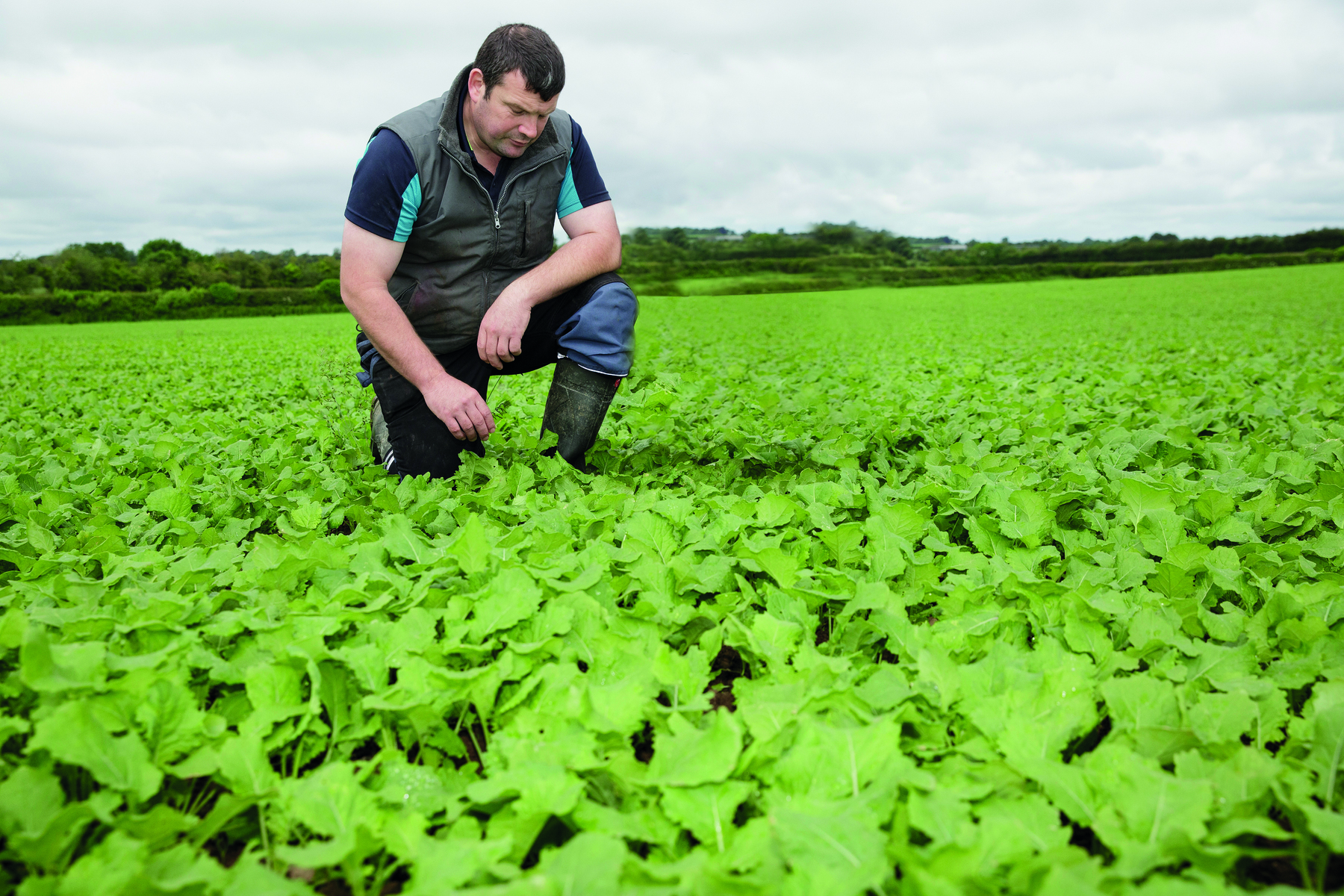Redstart is a high energy and versatile hybrid brassica grazing crop. Sown now, it makes a useful catch crop for countering any late-season forage shortages as an autumn grazing option.
As a hybrid, Redstart combines the rapid growth of forage rape with the winter hardiness of kale; this combination also makes Redstart ideal for overwintering.
What to consider when sowing Redstart
Redstart hybrid brassica is best sown in July or August, with earlier sowing giving higher yields. It’s said a day’s growth in July is worth a week’s growth in August and a month in September, with much of its feed value coming from the leaves rather than the stem.
Redstart is ready for grazing 90-110 days after sowing and is expected to yield 6t DM/ha, with 18-20% crude protein and energy levels of 10-11 ME (MJ/kg DM).
Brassicas are best grown in drier fields with good, fertile soil and offering some shelter for livestock. Avoid steep slopes and watercourses, and it should be at least four years since a brassica was last grown.
Check soil fertility by carrying out a soil test about eight weeks before sowing. Soil fertility and pH are particularly important. For Redstart, the optimum pH is 6.2 to 7.0, so apply lime accordingly.
Like a reseed, spray off the old sward and sow into a fine, firm seedbed at a maximum depth of 10mm and a seed rate of 3.5-4.0 kg/acre. Roll well to achieve good seed-to-soil contact. The high seed rate helps encourage competition between seedlings and results in leafier plants with a higher leaf to stem ratio and feed value.
Meeting Redstart’s high requirements for N, P and K will also help maximise its high yield potential. Apply according to your soil test results but generally 2-3 bags 10:10:20/acre are required. To avoid front loading N, top dress after four to six weeks.
Planning ahead
Redstart is highly digestible and low in fibre so must be supplemented with hay, straw, or silage in a 70:30 ratio. Bales are best put in place during the summer while soil conditions are good causing minimal disturbance from vehicle travel.
Brian Nicholson grazes 1,200 spring lambing ewes and replacements, as well as 1,700 lambs, on his County Kilkenny farm. He focuses on growing exceptional forage, using Redstart as a fast-growing, high energy break crop in his rotation:
“The rams’ growth rate on Redstart is consistent with the lambs on grass at 300 g/day. It re-grows after grazing allowing us to keep the sheep on it longer and works very well in our tillage rotation.”

Brian Nicholson, Johnstown, Co. Kilkenny
Ask a grass and forage expert about Redstart hybrid brassica
